There’s nothing quite like fresh-picked peppers, straight from the garden. However, it can be frustrating to wake up and find your pepper plants have been chewed by a nocturnal pest.
You work hard in the garden all day, only to find bite marks in your peppers and pepper leaves by morning. So, what’s eating your peppers at night?
There are a few different culprits that could be responsible. One of the easiest ways to determine what may be feeding on your peppers at night is go out in the garden and observe after hours. Rustle through the soil, check the undersides of leaves, and examine your fruit. You may find the pest you’re looking for!
If you’re not sure whether you are dealing with pests or disease, be sure to reference this page on diseases and problems as well. Here are some of the most common nocturnal feeders that may be ravaging your pepper (and nightshade) crops:
1. Slugs and snails
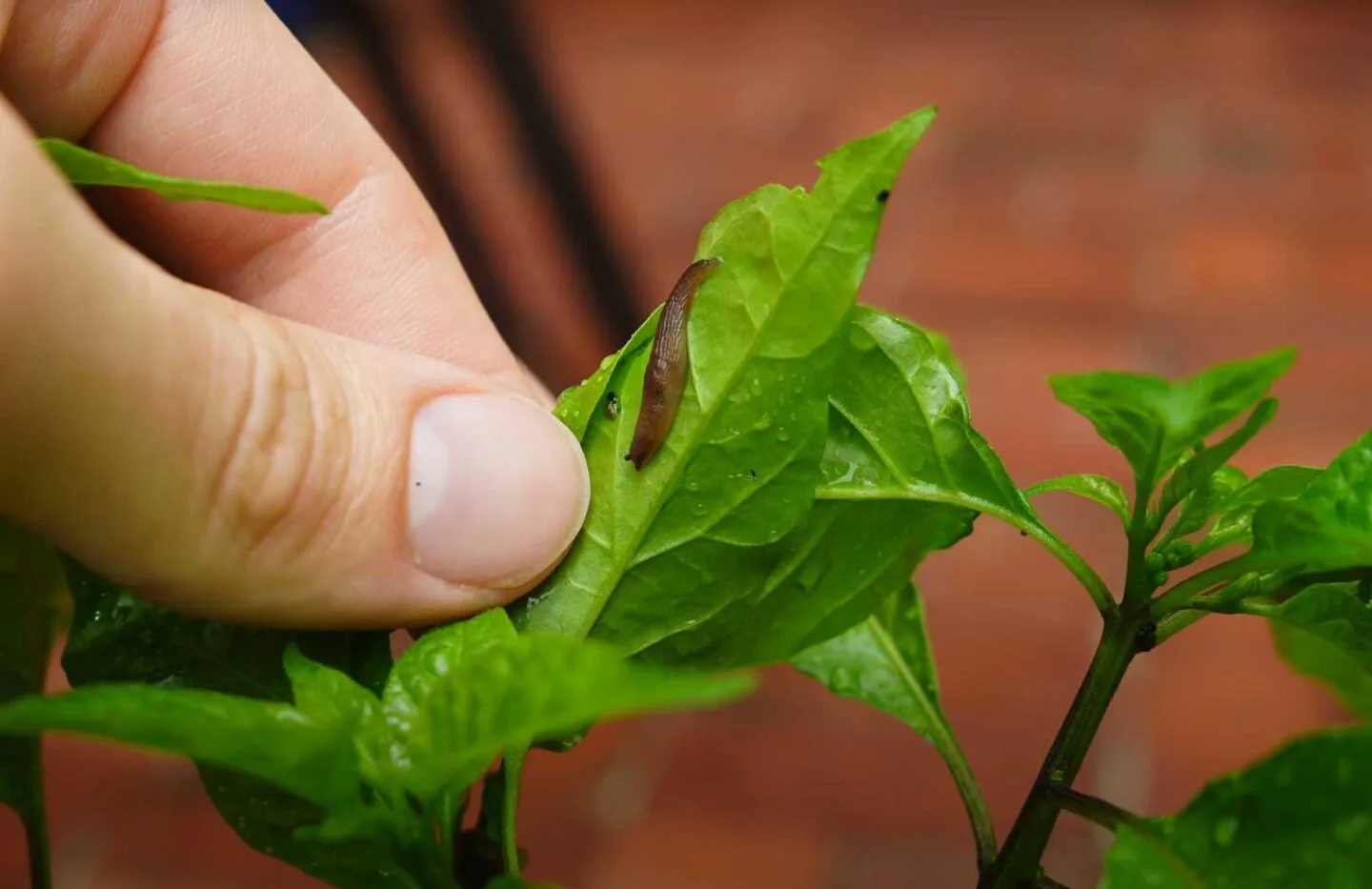
When it comes to overnight destruction, slugs and snails are a popular culprit. In fact, they’re usually the first pest to come to mind. Slugs and snails can cause quite a bit of damage, especially to young seedlings and tender leaves. If you’re finding that your peppers are being eaten overnight, slugs or snails very well may be to blame.
What the damage looks like: Slugs and snails typically leave behind large, ragged holes in leaves or fruits. You may also see slime trails around the garden. Slugs and snails also love to eat hostas. So, if you notice similar damage on your hosta plants, slugs may be the problem.
How to control them: If slugs and snails are an issue in your garden, you have a lot of options. First, try using a commercial slug and snail bait. These baits contain iron phosphate, which is a natural substance that is toxic to slugs and snails.
You can also create a beer trap by burying a cup or can in the ground and filling it with beer. The slugs and snails will be attracted to the yeast in the beer and will crawl in, only to drown. However, this is only effective on a very small area and you need to replenish the bait frequently.
Many garden centers also sell copper tape, which acts a barrier for the slugs. Try using this tape around your raised beds or potted peppers to block access to your pepper plants.
Those of you that have been sprinkling coffee grounds around your plants may be on to something. There is some research showing that coffee grounds (specifically the caffeine), is effective at deterring slugs.
Finally, you can hand-pick the slugs and snails from your garden. This is time-consuming (and must be done at night), but it will definitely reduce the population.
When controlling slugs in your garden, it’s important to maintain good air circulation around your plants. Prune lower leaves, limit your mulch, and provide adequate drainage.
2. Cutworms / Caterpillars
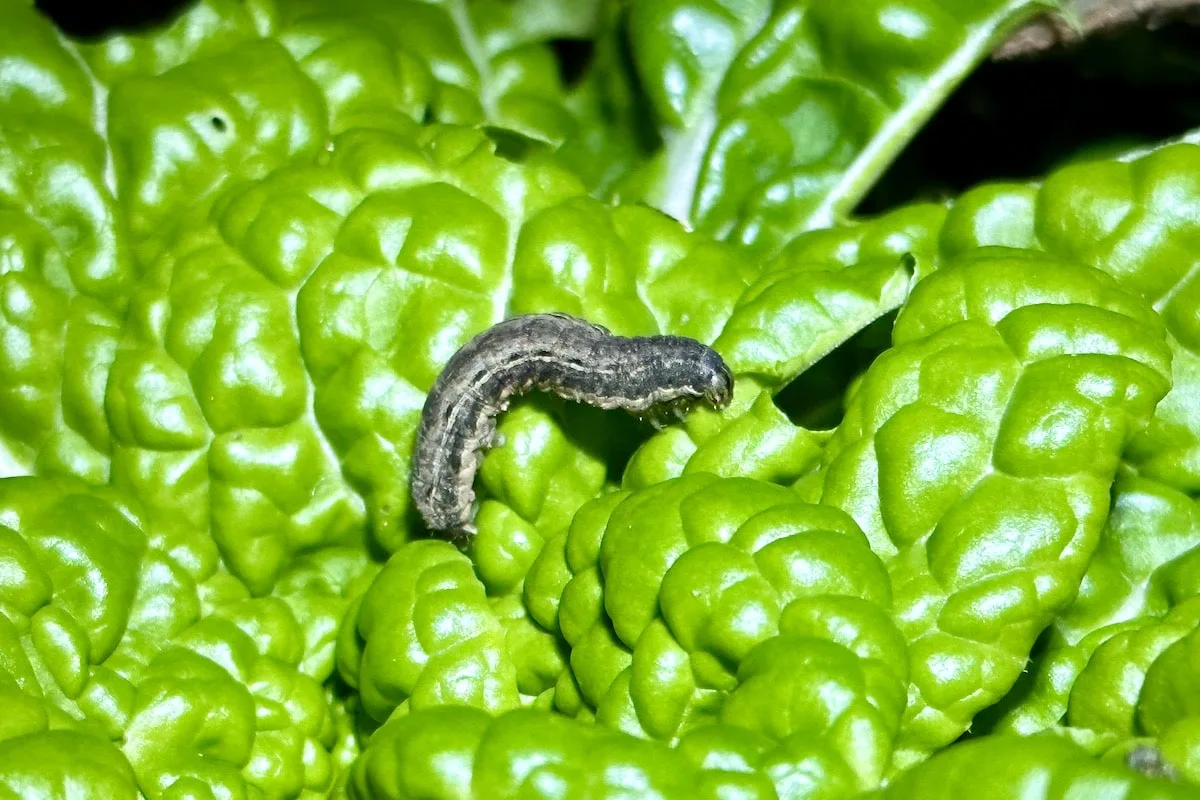
Cutworms are another common culprit when it comes to overnight damage to pepper plants. These caterpillars are the larvae of several different moths, and they’re often seen in gardens, eating young plants.
Cutworms are most active at night, but you may also see them on a cloudy day. When disturbed, cutworms curl up tightly into a “C” shape. They come in many colors and textures, from black to brown, or smooth to rough.
What the damage looks like: There are different species of cutworms and they damage plants in different ways. Surface cutworms will munch at the stem of the plant, eventually causing it to fall right over (which is where the cutworm got its name). Other cutworms climb up stems and feed, while subterranean cutworms feed on underground roots and stems.
How to control them: Handpicking cutworms, using bait, or creating “plant collars” for the stems of your plants are all effective ways of controlling this pest. You can use cardboard, foil, or plastic to create a small collar for your vulnerable peppers. Be sure to stay on top of your weeding as well.
3. Earwigs
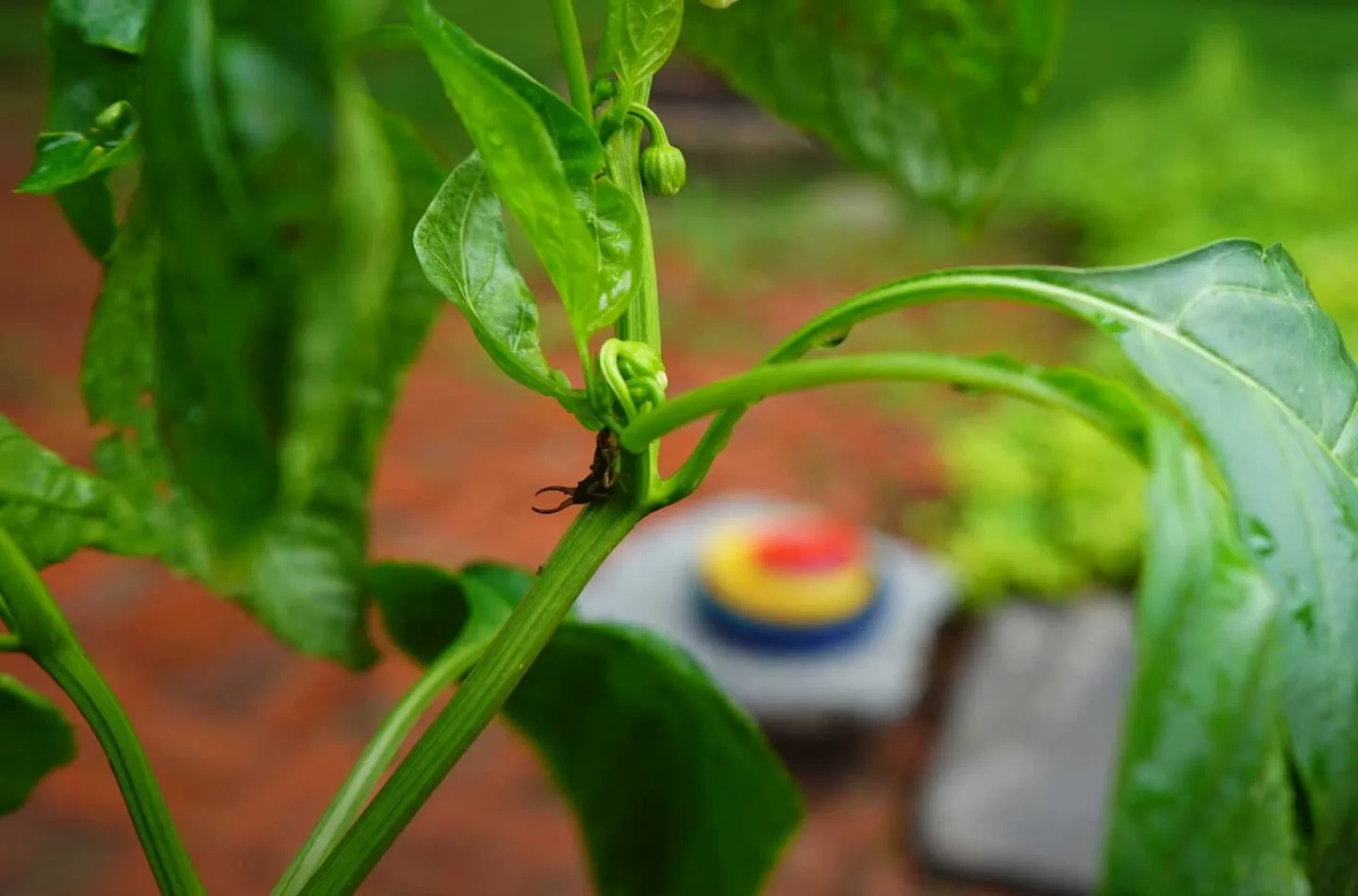
Earwigs are small, dark-colored insects with pincers on their rear end. These pests are active at night and they hide during the day in small crevices or under mulch. Earwigs are attracted to soft, tender fruits and leaves, which can make them a real problem for gardeners.
However, we have a love-hate relationship with earwigs. Even though they can devastate young pepper plants, they also feed on aphids, one of the most common and frustrating pepper plant pests.
What the damage looks like: Earwigs typically leave behind small, ragged holes in leaves or soft fruits. The damage from earwigs looks similar to that of caterpillars. If you’re wondering whether earwigs are the culprit, consider going outside at night to observe.
How to control them: Because earwigs are also considered beneficial, controlling them isn’t always necessary. If your earwig problem is out of control, you can bait and trap them with a simple oil trap. Use a cat food or tuna fish can with roughly 1 inch of fish or vegetable oil along with bacon grease/meat juice at the bottom. Discard of any earwigs that you catch and refill the trap. The trap works best when the can is buried in the soil at ground level.
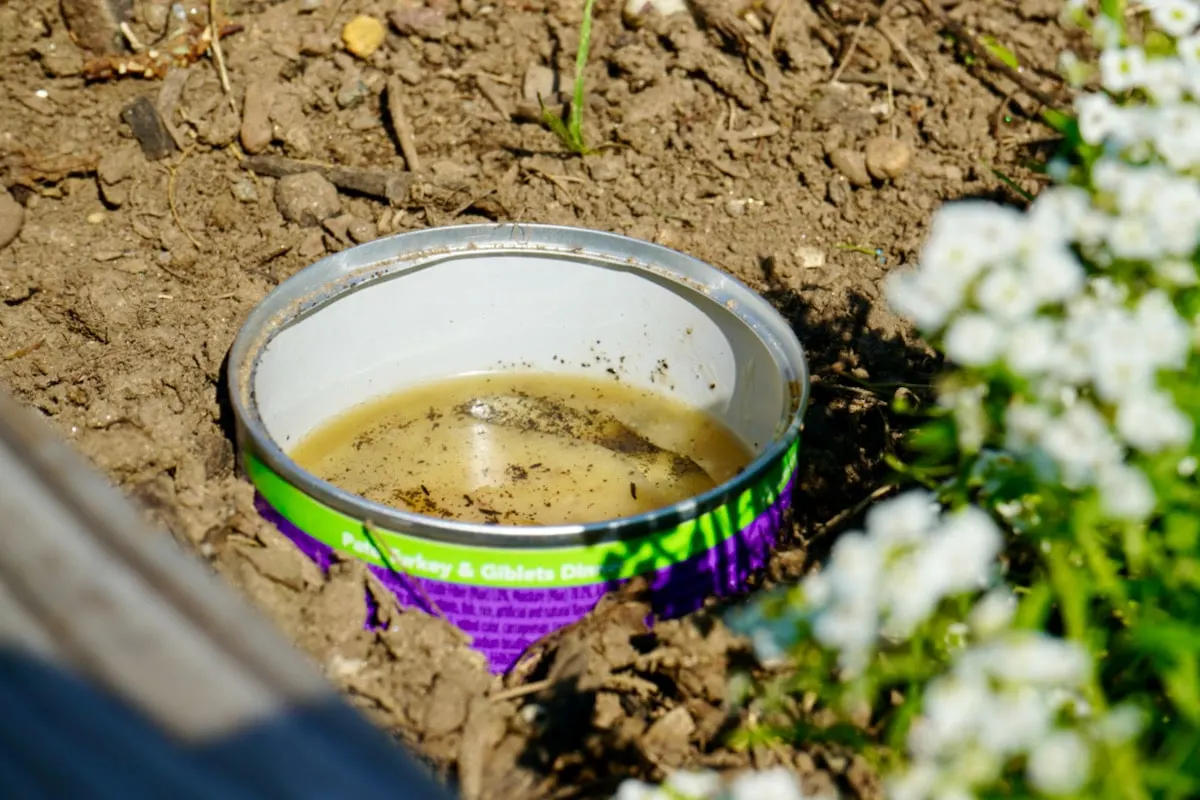
It’s important to note that this trap can attract other critters! To keep populations under control, be mindful of any decaying/moist material around your home and garden (such as old mulch). Spinosad is also effective against earwigs (see Captain Jack’s).
4. Beetles
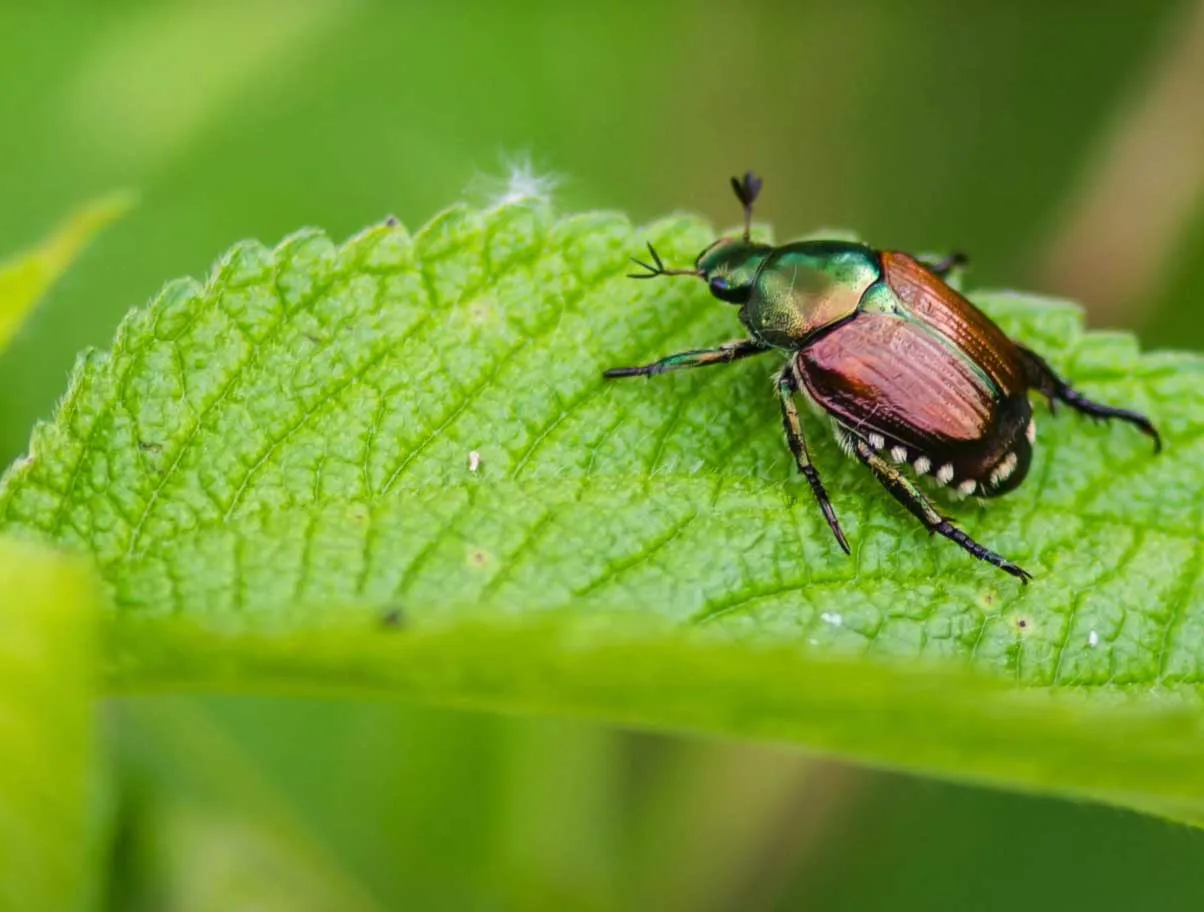
Beetles are one of the most destructive pests in gardens. From Japanese beetles to Asiatic beetles, these pests can quickly decimate a crop. The Asiatic beetle is a nocturnal feeder that will happily munch away at the leaves of your pepper plants. We have had major issues with these beetles in our garden!
What the damage looks like: Beetle damage typically looks like small, irregular holes. The damage is typically scattered across the plant, rather than concentrated in one area. Asiatic beetles feed on the edges of leaves, while Japanese beetles leave behind a pattern that resembles lace. One thing to note is that Asiatic beetles are active at night, while Japanese beetles are active during the day. So, this can help you differentiate as well.
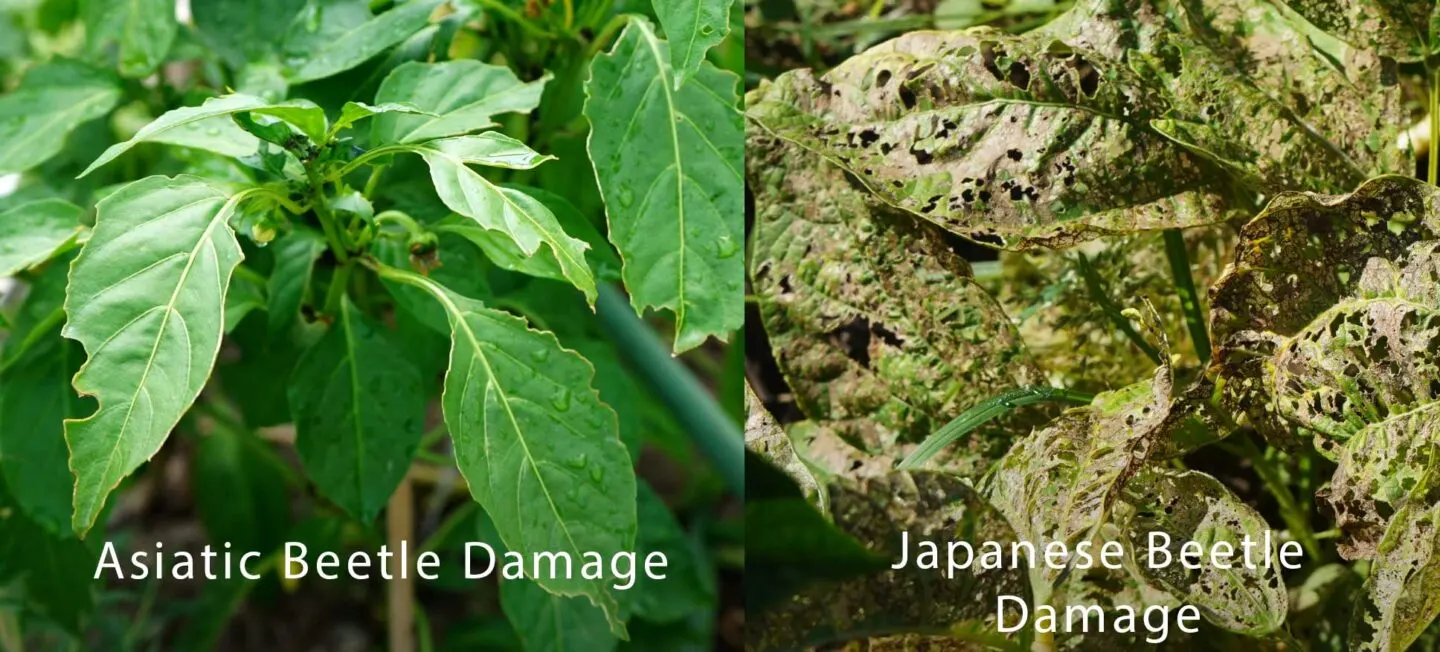
How to control them: The best way to control Asiatic beetles is by knocking them off your plants into a bucket of soapy water. Like other pests, they prefer moist environments and won’t survive as well in drought conditions.
5. Hornworms

Hornworms are the caterpillars of large moths. They get their name from the “horn” that protrudes from their rear end. Hornworms can destroy an entire plant in a matter of days, so they’re definitely a pest to be on the lookout for. While typically found feasting on tomatoes, they will also eat peppers and other crops in the nightshade family.
What the damage looks like: Like most caterpillar damage, hornworm damage typically looks like large bite marks along the edges of leaves. These pests start feeding on the upper part of the plant and leave behind black droppings that are easily visible to the naked eye.
How to control them: The best way to control hornworms is by hand-picking them off your plants and disposing of them. You can also use predatory insects. Green lacewings and ladybugs will feed off eggs, and predatory wasps will feed on the grown hornworms. If you must use a pesticide, Bacillus thuringiensis (Bt) and Spinosad are both good options for hornworms. Spinosad is toxic to bees when wet, so be sure to use this product when bees are not active.
In addition to the pests listed above, there are other possibilities. If deer have nothing else to eat, they will also happily munch on your pepper plants. You may also be dealing with aphids, one of the most common and frustrating pepper pests.
Have you noticed any damage to your pepper plants overnight? Leave a comment and let us know if you have found any nocturnal feeders (and what they were!).

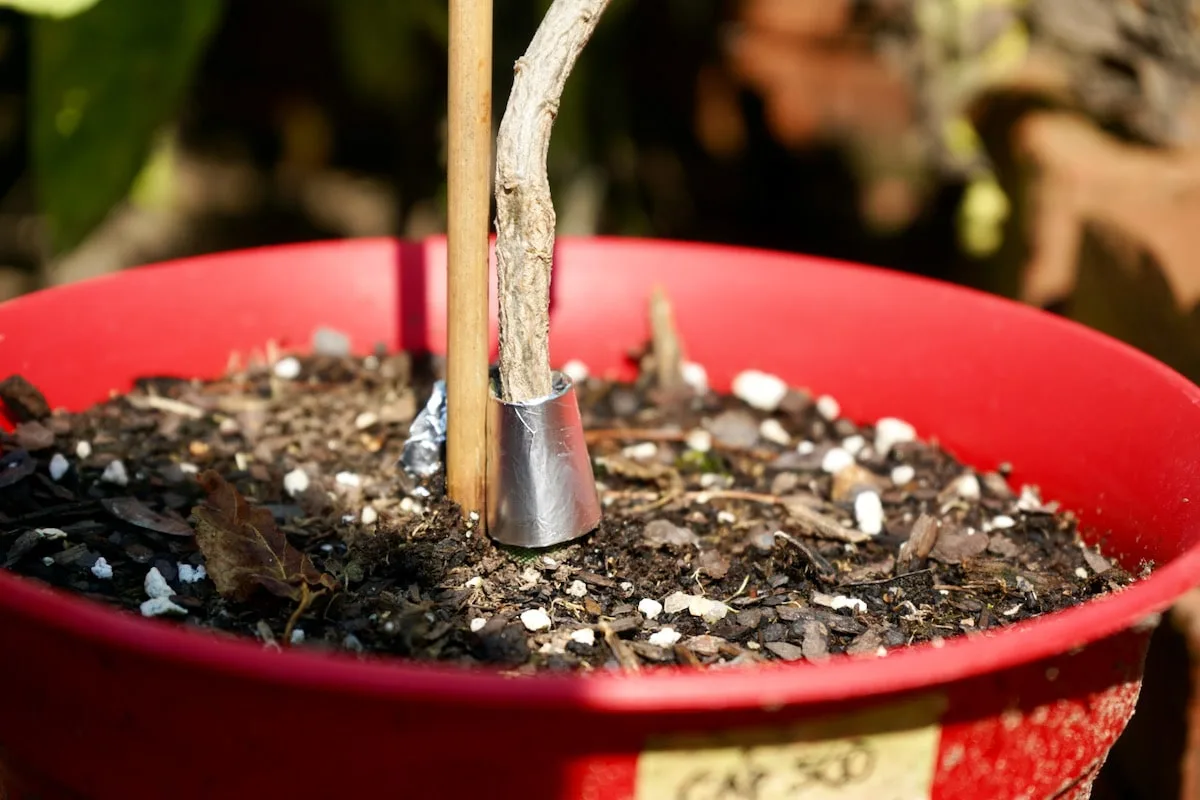
John
Monday 9th of October 2023
Something ate my jalapeno plants and left my sweet pepper plants. Nothing left but a very small piece of the stalk. What would do this
peppergeek
Tuesday 10th of October 2023
If they were young, could be rabbit, if they're larger, deer can do a lot of damage, even to hot peppers.
jason
Friday 18th of August 2023
I have 1 small hole and it's only in my Habaneros. It doesn't look raggedy it look as if a drill with a small bit was used on the pepper. i crush the pepper open and there is nothing in there. i spray with an organic formula and have gone over the leaves multiple times and there is nothing there, so maybe they come out at night? any idea what it could be? i'm losing ore peppers this way than i'm harvesting
Eric
Monday 28th of August 2023
@jason, there's a particular fly that plants a maggot in the pepper that looks like a perfect drill hole and believe me it's in there, it bores into the inner flesh and is the same colour so almost impossible to see till you pick it out! It turned my stomach when I found one in a jalapeno I was eating lol.
peppergeek
Tuesday 22nd of August 2023
Keep an eye out for bugs, maggots or rot inside the pod which can also be a clue. It could also be stink bugs. We have a post here (https://peppergeek.com/holes-in-pepper-plant-leaves/) about holes in pepper plant leaves, and if you read a bit into the post you'll see stink bugs can also cause damage to pods. They're very easy to spot.
Ann Marie
Tuesday 15th of August 2023
Hi. Yesterday we noticed the leaves on our growing sunflowers and pepper plant were completely gone, and was there day before. This morning, 1 of the peppers was half eaten, and it looks like teeth marks along edge. Also, made holes in other 2 peppers. We have a 6ft gate around yard. We're baffled, what can it be doing this.
peppergeek
Thursday 17th of August 2023
Hmm, have you checked for large caterpillars? Deer also sometimes eat pepper plants, but rarely eat the fruits unless they are sweet peppers
Fran
Sunday 9th of July 2023
Overnight the foliage on my pepper plant was gone. I notice droppings (small dark). The fruit is untouched. Amy suggestions
peppergeek
Tuesday 11th of July 2023
Sounds like caterpillars or maybe cutworms. Could also be beetles, like Asiatic or Japanese beetles. Hand-pick them off or use BT for caterpillars.
Nan L
Wednesday 28th of June 2023
Thanks for all the great info you've provided in both your articles and video's. We've been following your fertilizing guidelines for the last 2 years. My problem is that something is tearing the tips off of my chili peppers. I say tearing and not eating because you can see little bits of the pepper tips on the ground right under them. They don't seem the be eating the green ones. It's very discouraging. Any advice on how to stop it or even what it might be?